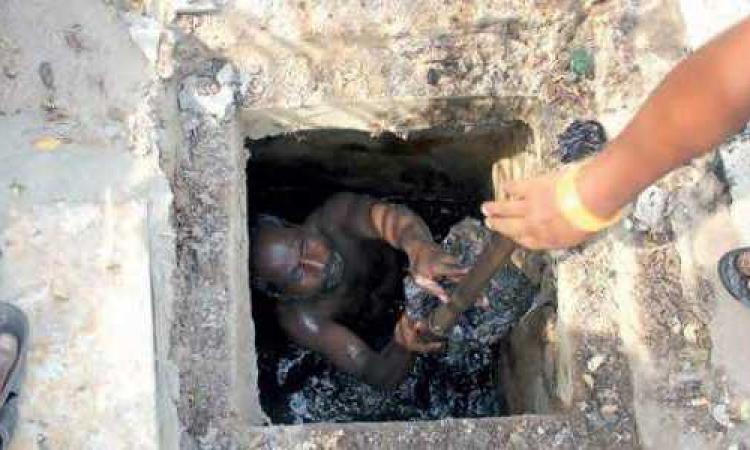
Ahead of monsoon, workers made to clean stormwater drains filled with sewage in Hyderabad
Despite the ban on manual scavenging, sanitation workers are made to clean sewage-filled stormwater drains across Hyderabad as part of the city’s monsoon preparedness drive. Workers enter stormwater drains sans masks or safety equipment to clear out accumulated sludge. Corporation officials, while acknowledging that illegal connections bring household sewage into these drains, say they are left with no choice as they do not have machines to clean these shallow drains.
Underground leakage and unmetred water stands result in Chandigarh's piped water loss
While Chandigarh faces a water supply shortage of 50 million gallons daily (MDG), it has been noted that the city loses close to 25 percent of its piped water to underground pipe leakages and unmetred water stands in its various colonies. This amounts to a daily loss of close to Rs 15 crore to the municipal corporation. An expert committee had earlier recommended better maintenance of machinery and distribution system way back in 2012 which the corporation has not gotten around to implement.
NGT-appointed monitoring committee declares Bandi's water unfit for use
With the discharge of industrial pollutants from textile units in Pali continuing unabated, the monitoring committee appointed by the National Green Tribunal has declared the Bandi river’s water unfit for agricultural and domestic use. The water is so highly polluted that weeds such as Prosopis are not able to survive along the river’s banks. The local groundwater’s total dissolved solids (TDS) content is found to be phenomenally high as well.
Water tankers to be fitted with GPS in Chennai soon
In a bid to curtail unaccounted trips by private tankers operating on a contract basis, Chennai Metrowater has decided to fix global positioning system (GPS) equipment in nearly 700 water lorries. Six years after being proposed for the first time, the plan has managed to take off as the city deals with increased demand for tanker water with peak summer setting in. This season has witnessed a steep rise in the number of tanker trips, with each tanker plying nine to 10 trips on any given day.
Over 1.47 crore people drink arsenic contaminated water in the country: MDWS
Statistics from the Ministry of Drinking Water and Sanitation suggests that close to 1.47 crore people across 17,000 areas in India face a major threat from arsenic pollution. Data suggests that over 70,000 habitations are affected by a host of pollutants including heavy metals, iron, nitrates and salt. While West Bengal leads in arsenic contamination across the country, Rajasthan tops the fluoride contamination charts.
This is a roundup of important news published between May 8 and 14, 2018. Also, read policy matters this week.